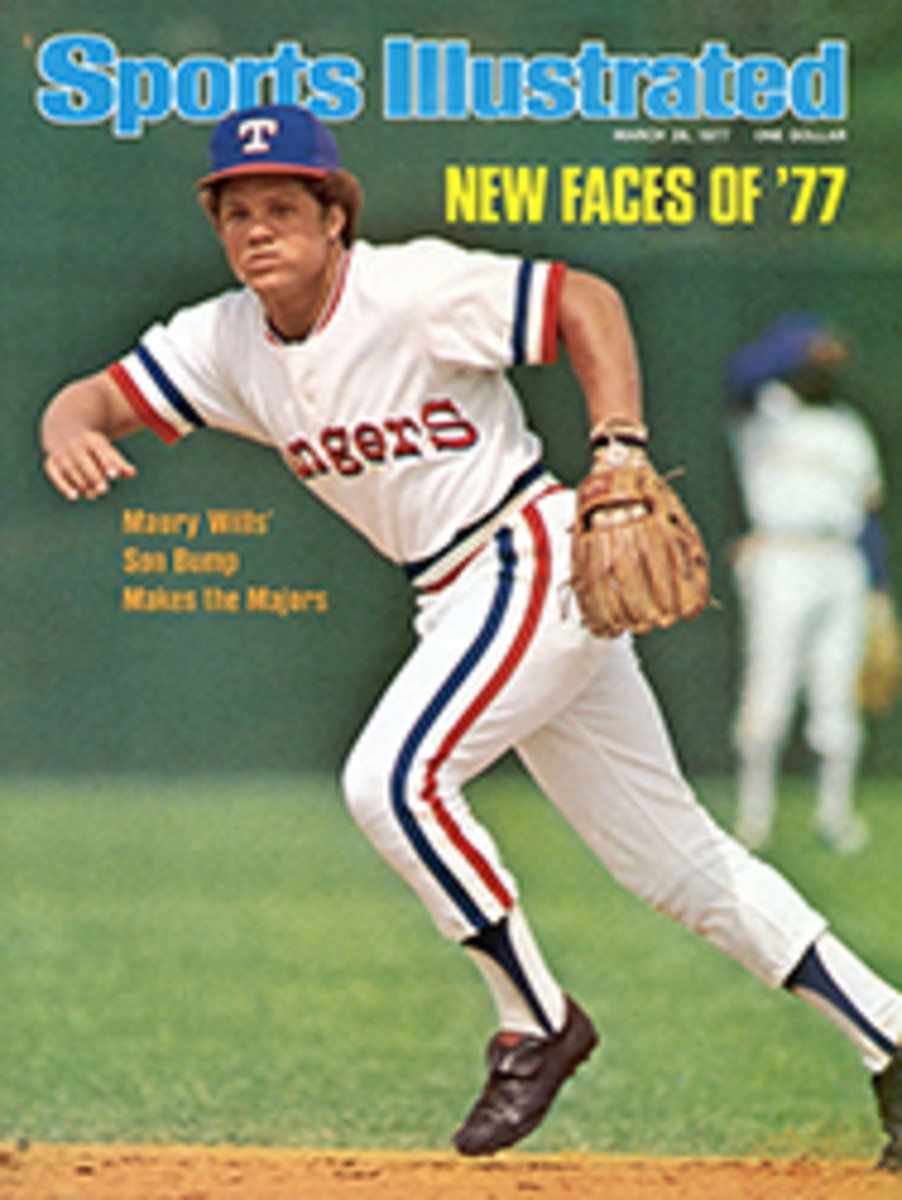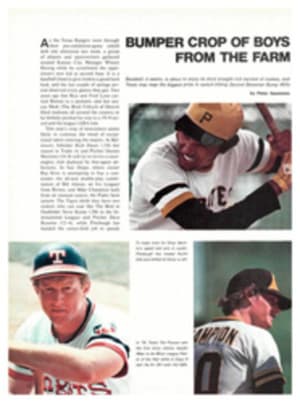
IN THE '20s, STUNT FLYERS HAD A HIGH OLD TIME TILL JUST BEFORE THE CRASH
In 1920 young Americans attended all-night parties, drank bootleg gin and danced in a manner described by one religious journal as "impure, polluting, corrupting and debasing." Fresh from the horrors and excitement of World War I, they were wriggling free from the cocoon of Victorian conformity. And like any self-respecting new butterflies, they were taking to the air.
Getting to fly had never been—and never again would be—easier. For as little as $100, an enterprising pilot could go into business with a war-surplus Jenny (Curtiss JN-4D), a flimsy wooden bi-plane with cloth-covered wings held together with a cat's cradle of piano wire. It was powered by an asthmatic engine generally referred to as "a bunch of parts flying in formation." In no time barnstorming fliers began appearing at county fairs and in cow pastures all across the nation.
A gypsy pilot played the dual roles of showman and chauffeur. A typical exhibition began with simple aerial tricks like loops and rolls, then progressed to more daring feats like spinning nose dives. By the completion of the aerobatics, the spectators, now confident of the aircraft and the aviator, were ready to risk a flight in the plane's front cockpit. Each ride cost $5 (a full day's pay for a workman of the time) and took only a few minutes, but the exhilaration, especially for children, often lasted a lifetime: the sudden buoyant freedom, the rush of oil-tainted wind, the astonishing panorama of farmland and sky and the rough bounces punctuating a return to reality.
The suntanned airman, clad in khaki, leather and cocky self-assurance, instantly became a local celebrity, particularly among the female population. Flamboyant Whitey Whitall, for example, collected so many girl friends that he named his plane "After You." However, the roving life entailed predictable discomfort, such as sleeping on hay bales and washing in gas stations, as well as some unforeseen adversities. Legend has it that Charles Lindbergh (called "The Flyin' Fool" in his vagabond days) awoke in a Midwestern field one morning to discover that a cow had spent most of the night licking the stiffening chemical off his plane's linen wings, transforming them into a rack of wet laundry.
Many fliers, weary of going it alone, engaged a wing walker for companionship and to add a spectacular new dimension to their shows. Wing walking originated in 1917 when Signal Corps trainee Ormer Locklear, flying over his unit's airfield, hauled himself out of the cockpit to disentangle his radio antenna from a bracing wire. Locklear's superiors were unamused by his stunt, and when he returned to his seat the first dots and dashes heard over his radio read, "Locklear U R grounded."
Soon hundreds of acrobats were clambering over wings and fuselages with simian agility. Simple gymnastics—head-stands and cartwheels—quickly led to more outrageous efforts.
One wing walker, wearing buckskins, beads and hair three feet long, was billed as "Bellowing Moose, Fearless Sioux Warrior." He knotted his locks around the spreader bar separating the landing wheels, let go of the bar and hung like a salami. His pilot warned, "One day this act is gonna be Sioux-icide." The prediction almost came true in Oklahoma on a damp summer day in 1920 when the knot slipped, dropping Bellowing Moose 75 feet into Lake of the Cherokees, of all places.
Other stunt men explored novel methods of boarding and deplaning. On May 16, 1920 at Coronado Beach, Calif., Clyde "Upsidedown" Pangborn, a star pilot with the Gates Flying Circus, attempted to climb from the rear deck of a speeding automobile up a rope ladder dangling from a plane overhead. The ladder flirted with Pangborn's outstretched fingertips, dropped into his grip and yanked him into the air. Immediately losing hold, he bounced and rolled over the packed sand at 65 mph. Pangborn lived to fly again, but he had split his breastbone, broken his left wrist and both shoulders, dislocated a hip and damaged several vertebrae.
The following year, Pangborn's buddy Wesley May fared better doing a new stunt up the coast at Long Beach. May achieved the first in-flight refueling in history. No umbilical hose was needed, because he simply strapped a five-gallon can of gasoline to his back, crawled from the wing of a Standard J-1 to the wing of a Jenny and dumped the gas into the Jenny's tank.
May also displayed his nerve and artistic flair by roller-skating on the top wing of a Standard before sweeping off into a parachute jump. The primitive parachutes of the era were both unreliable and uncontrollable—not much safer than jumping out of a midtown Hilton with a firm grip on your bed sheets. May's luck ran out May 21, 1922 in San Francisco when a runaway chute carried him into a cemetery, where he suffered a fatal collision with a tombstone.
The aerial lunacy reached its peak late in 1926 when 20-year-old Roy Ahearn celebrated his wedding by planning a cookout at Cocoa Beach, Fla.—with himself as the main course. Ahearn ran ignition wires into gunpowder sacks tied to the sides of his plane, doused the aircraft with 35 gallons of gasoline and crude oil and took off with the intention of igniting the gunpowder just before bailing out.
Viewed by an army of thrill seekers, Ahearn guided his flying tinderbox to 1,200 feet, where he set it ablaze. But he had difficulty pulling the entrée off the grill, because his parachute lines were wrapped around the plane's controls. Coolly freeing each strand, he leaped through the flames to safety as the plane began its fiery descent toward a crash in the ocean. Upon landing, he found that his horror-stricken bride had fainted on the beach. Ahearn, with a true daredevil's incomprehension of his own mortality, shrugged his shoulders and strolled off to retrieve his chute.
Although Ahearn's act was a surefire crowd pleaser, the novelty of pure theatrics began to wear thin. Commercial aviation was blossoming with the development of fixed-base operations. New federal regulations limited stunt flying, and many planes, as tired as old circus animals, had to be scrapped.
By 1928, after a decade of stunting and passenger carrying, the gypsy pilots had no customers left. Everybody, it seems, had been taken for a ride. "When we buzz over now, even the cows don't look up," said Whitall after his final crosscountry foray. "Guess people are ready for something different. Thanks to us, they already know how to fly."

